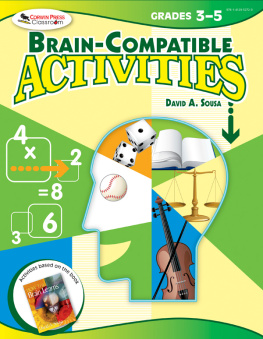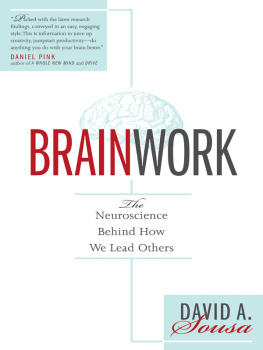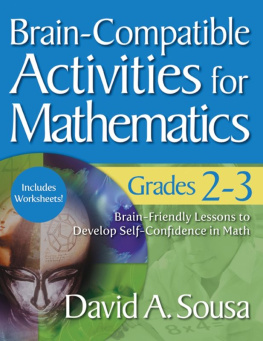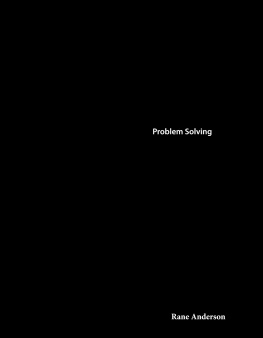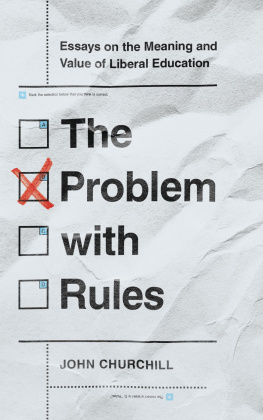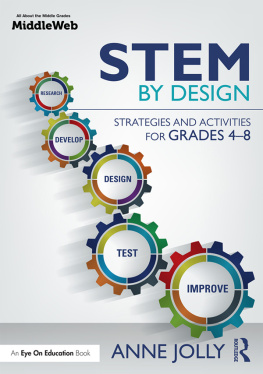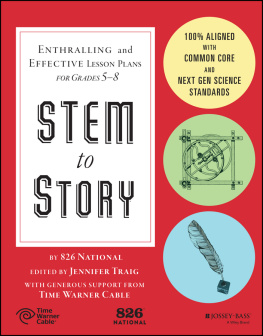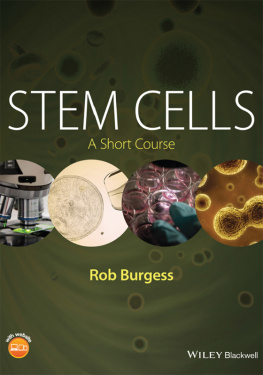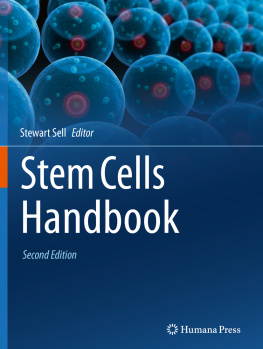Praise for From STEM to STEAM
From STEM to STEAM is a game changer for educators who are serious about bringing excellence back into the classroom. It crosses ages, stages, and curriculum development through research and practical application.
Darleen Horton, Environmental
Magnet School Coordinator,
Cane Run Elementary, Louisville, KY
This book is a must-read for educators, policymakers, and industry leaders addressing how to develop an innovative workforce for the future. Sousa and Pilecki have successfully outlined a pragmatic approach to empower teachers with the ability to integrate the arts into science, technology, engineering, and math (STEM) discipline areas. This sets the stage for a national conversation to move from STEM to STEAM.
Edward L. Abeyta, Director of K16
Programs, University of California,
San Diego Extension, La Jolla, CA
Imagine classrooms of children imitating the ways of knowing experienced by DaVinci or Michelangelo. In From STEM to STEAM, authors Sousa and Pilecki not only persuade us to integrate arts into the K12 curriculum, they also remind us of the value of a classical educationan education that reveals how all knowledge is interrelated. In this timely book, the authors entice K12 educators to transform their classrooms into centers of arts and science inquiry; and, in a rather credible manner, provide step-by-step guidelines for engaging K12 learners in a rich interdisciplinary curriculum of science, technology, engineering, arts, and mathematics.
Susan Lee Pasquarelli,
Professor of Literacy Education,
Roger Williams University, Bristol, RI
The book discusses one of the most critical issues in education todayusing creativity and inquiry to inspire and engage students. STEAM is by its nature collaborative and creativeblending the arts and scienceswhich is exactly what 21st century students are being expected to do. The authors present a thoughtful, real-life approach to concepts, lessons, and activities that can be used in and out of the formal classroom environment. A must-read for any educator or youth development professional.
Judy Nee, Executive Vice President/General Manager,
AlphaBEST Education, Inc.
STEM without creativity in application is stagnant. Brain research shows that we must rethink methodology in STEM education if we are to produce not only talented professionals, but also enriched members of society. From STEM to STEAM is a start in that direction.
Debra K. Las, Science Teacher,
Rochester Public Schools, MN
I found Sousa and Pileckis book to be a practical how-to on integrating the arts, both visual and performance, into the current trend in education to accentuate the teaching of science, technology and mathematics. All in all, this practical book melds the arts with the sciences, and that might just make more educators look at the teaching and implementing of arts programs with a favorable eye.
Sister Carol Cimino,
Educational Consultant, Rochester, NY
From Stem
to Stem
From Stem
to Stem
USING BRAIN-COMPATIBLE
STRATEGIES TO INTEGRATE THE ARTS
DAVID A.
SOUSA
TOM
PILECKI


FOR INFORMATION:
Corwin
A SAGE Company
2455 Teller Road
Thousand Oaks, California 91320
(800) 233-9936
www.corwin.com
SAGE Publications Ltd.
1 Olivers Yard
55 City Road
London EC1Y 1SP
United Kingdom
SAGE Publications India Pvt. Ltd.
B 1/I 1 Mohan Cooperative Industrial Area
Mathura Road, New Delhi 110 044
India
SAGE Publications Asia-Pacific Pte. Ltd.
3 Church Street
#10-04 Samsung Hub
Singapore 049483
Acquisitions Editor: Jessica Allan
Associate Editor: Kimberly Greenberg
Editorial Assistant: Heidi Arndt
Production Editor: Cassandra Margaret Seibel
Copy Editor: Megan Markanich
Typesetter: C&M Digitals (P) Ltd.
Proofreader: Lori Newhouse
Cover Designer: Michael Dubowe
Permissions Editor: Karen Ehrmann
Copyright 2013 by Corwin
All rights reserved. When forms and sample documents are included, their use is authorized only by educators, local school sites, and/or noncommercial or nonprofit entities that have purchased the book. Except for that usage, no part of this book may be reproduced or utilized in any form or by any means, electronic or mechanical, including photocopying, recording, or by any information storage and retrieval system, without permission in writing from the publisher.
All trade names and trademarks recited, referenced, or reflected herein are the property of their respective owners who retain all rights thereto.
Source of bottle xylophone photo on page 182: Natursports/Shutterstock.com
Printed in the United States of America.
Library of Congress Cataloging-in-Publication Data
Sousa, David A., author.
From STEM to STEAM : using brain-compatible strategies to integrate the arts / David A. Sousa, Thomas Pilecki.
pages cm
Includes bibliographical references and index.
ISBN 978-1-4522-5833-1 (pbk.)
1. ArtsStudy and teaching. 2. ScienceStudy and teaching. 3. Interdisciplinary approach in education. 4. Cognitive learning. I. Pilecki, Thomas, author. II. Title.
| LB1591.S68 2013 |
| 372.5dc23 | 2012046842 |
This book is printed on acid-free paper.
13 14 15 16 17 10 9 8 7 6 5 4 3 2 1
Contents
Acknowledgments
Darleen Horton
Environmental Magnet School Coordinator
Jefferson County Public Schools, Cane Run Elementary
Louisville, Kentucky
Debra K. Las
Science Teacher
Rochester Public Schools
Rochester, Minnesota
Susan Leeds
Teacher
Howard Middle School
Orlando, Florida
Renee Peoples
Teacher and Math Coach
Swain West Elementary
West Bryson City, North Carolina
Herbert Perez-Vidal
Freelance Writer
Retired Professor of French and Spanish
Palm Beach State College
Palm Beach, Florida
Gavin Quinn
Biology and Environmental Science Teacher
Eastern Camden Regional High School
Voorhees, New Jersey
Tracy Rosof-Petersen
Teaching Artist
Lake Worth, Florida
Melanie Sitzer Hedges
Art Teacher, National Board Certified Teacher (NBCT)
West Gate Elementary School
West Palm Beach, Florida
About the Authors
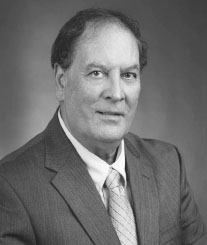
David A. Sousa, EdD, is an international consultant in educational neuroscience and author of more than a dozen books that translate brain research into strategies for improving learning. He has presented to more than 200,000 educators across the United States, Canada, Europe, Australia, New Zealand, and Asia. He has taught high school chemistry and served in administrative positions, including superintendent of schools. He was an adjunct professor of education at Seton Hall University and a visiting lecturer at Rutgers University. Dr. Sousa has edited science books and published dozens of articles in leading journals. His books have been published in French, Spanish, Russian, Chinese, Arabic, Korean, and several other languages. He is past president of the National Staff Development Council (now Learning Forward) and has received honorary degrees and awards for his commitment to research, professional development, and science education. He has appeared on NBCs
Next page

